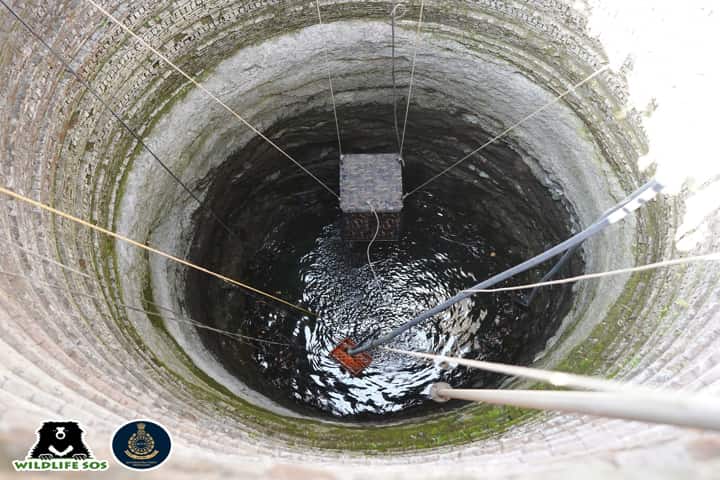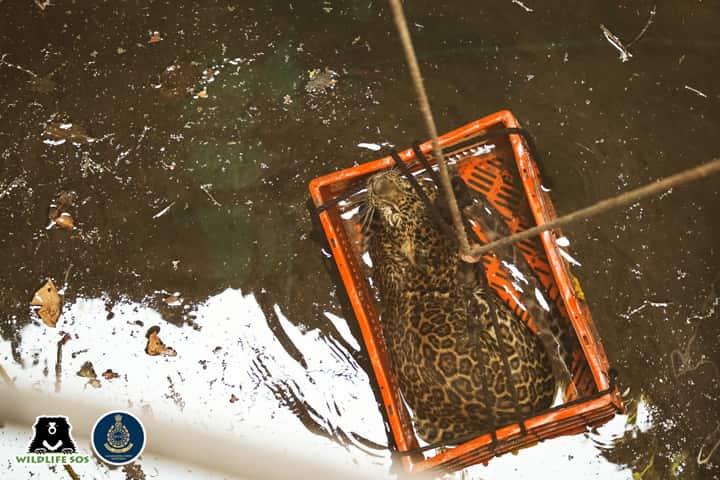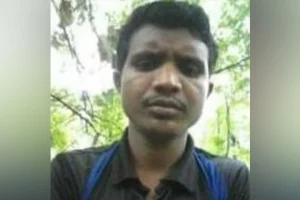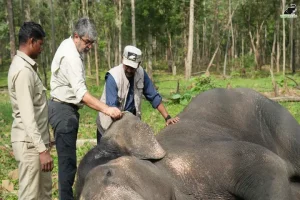Prompt action on the part of Savargav villagers in Maharashtra helped save the life of a leopard which was stuck in an 80-foot-deep well. The residents of the village were struck by an unfamiliar sound emanating from a nearby well and on inspection they found a leopard struggling to stay afloat in it.
Concerned about its well- being, they immediately reported the incident to the Maharashtra Forest Department who in turn alerted the Wildlife SOS Manikdoh Leopard Rescue Centre in Junnar Forest Range.

The Forest officials and the three-member rescue team from the NGO inspected the well and decided that temporary relief needs to be provided to the leopard as it was getting tired of swimming to keep afloat. For this they lowered a plastic crate tied with ropes. This helped the tired animal to board the crate and get some rest.
Following this, they then lowered a trap cage and after a 30-minute-long effort, the leopard was safely pulled out of the well.
The leopard is currently under medical observation at the MLRC which is run by the NGO along with the Forest Department.
Sharing details about the operation with India Narrative, Dr. Akhilesh Dhage, Veterinary Officer, Wildlife SOS said: “Upon initial inspection, we discovered the leopard to be a young female, approximately 2 years old. The leopard has not sustained any kind of injuries, and remains active and healthy. Currently she is under observation and we will soon release her back into a suitable natural habitat.”
Sharing concern on danger of open wells, Kartick Satyanarayan, CEO, Wildlife SOS said they continue to remain a threat to wild animals.
The NGO has already identified wells from which they have made maximum rescues. They intend to cover these in such a way that their purpose of supplying water to people is not lost. These wells also need to be covered with strong materials so that it can withstand any deterioration in the future.
The NGO aims to cover 40 wells in the first phase of its operation and of these 10 have already been executed.




















